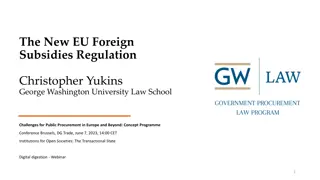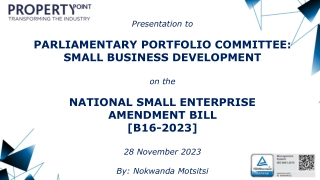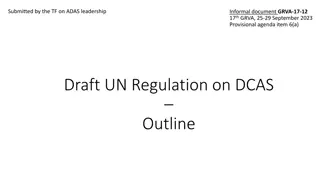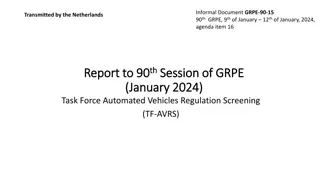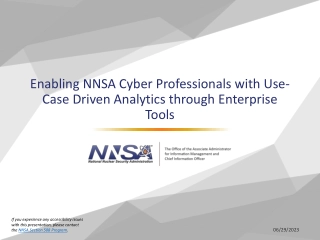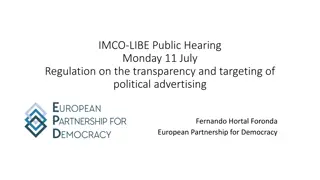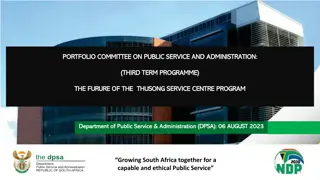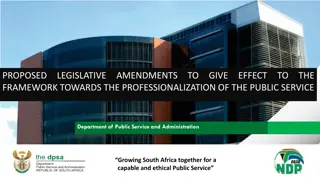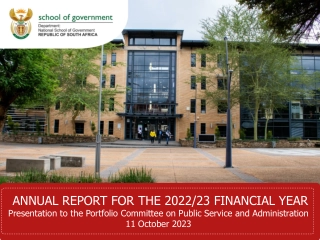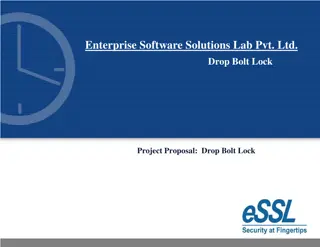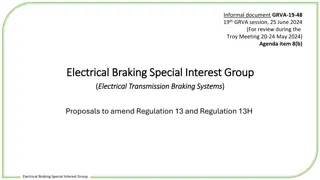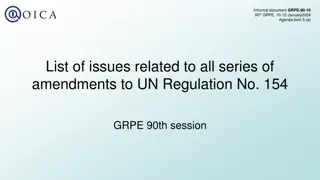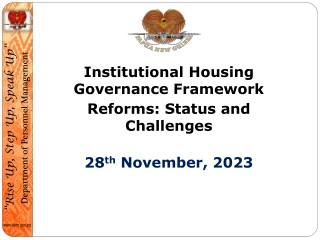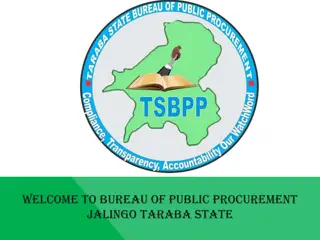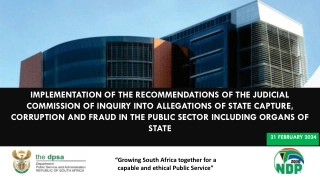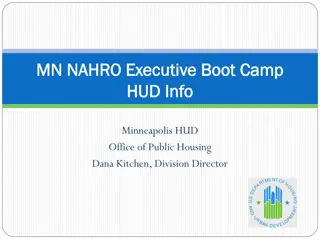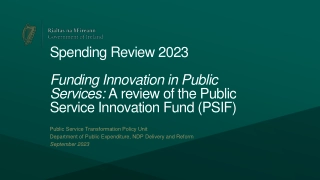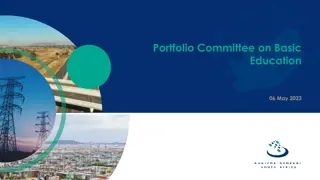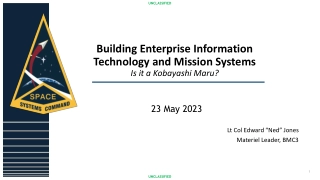Alternatives to Regulation in the Market: Public Enterprise and Franchise Bidding
Understanding the concept of natural monopoly problem and exploring the alternatives to market regulation such as public enterprise and franchise bidding, with a focus on cable television. Delve into the challenges and benefits of each approach, including the potential of franchise bidding to achieve the same outcomes as market regulation with less information.
Download Presentation
Please find below an Image/Link to download the presentation.
The content on the website is provided AS IS for your information and personal use only. It may not be sold, licensed, or shared on other websites without obtaining consent from the author. Download presentation by click this link. If you encounter any issues during the download, it is possible that the publisher has removed the file from their server.
Presentation Transcript
Chapter 11 Alternatives to Regulation in the Market: Public Enterprise and Franchise Bidding, with an Application to Cable Television
A natural monopoly problem is when monopoly suppliers set prices well above relevant production costs There are two possible alternatives to this market regulation Public enterprise: a firm that is owned by the government rather than by private shareholders Franchise bidding: arises when a government awards the exclusive right to provide a service of a specified quality to the privately owned firm that offers to charge the lowest price for the service
Public Enterprise An unregulated, profit-maximizing monopoly will raise the price for its service above the corresponding average cost of production Two important reasons why a profit-maximizing monopoly can fail Limited expertise Limited motivation Limited discipline is also an important factor Government ownership may provide a reasonable resolution of the natural monopoly problem in some instances. However, it is not a panacea in general
Basic Elements of Franchise Bidding Harold Demsetz suggested how franchise bidding might operate in practice The central idea of Demsetz s franchise bidding is that when the competition is intense, the price will lower to the average cost of supplying the service, so the winning bidder will secure only a normal profit The government s role under franchise bidding is to act as an auctioneer rather than as a regulator
Basic Elements of Franchise Bidding Franchise bidding via a modified English auction Consider the English (or oral ascending) auction form The most efficient firm can always outbid its less efficient rivals Whether franchise bidding secures the welfare-maximizing outcome depends on whether there is sufficient competition among the most efficient potential suppliers
Information Advantages of Franchise Bidding In principle, franchise bidding can achieve the same outcome as regulation in the market and can do so even when the regulator has substantially less information
Potential Drawbacks to Franchise Bidding The need for information about consumer preferences Franchise bidding may not perform as well in practice as it does in theory When a service entails multiple important dimensions of service quality, the regulator must know how highly consumers value each of the dimensions in order to determine the best combination of features to procure from the franchise operator The need to fully specify all dimensions of service quality If a key dimension of service quality . . . is difficult to describe and measure accurately, then it may not be clearly specified in the franchise agreement
Potential Drawbacks to Franchise Bidding Inefficiency of franchise fees Examine how local government fees can change outcomes under franchise bidding
Contractual Arrangements for the Post-Bidding Stage Recurrent short-term contracts Oliver Williamson: identified different types of contracts that might be employed to handle unpredictable changes in industry conditions Recurrent short-term franchise agreements (or contracts ) is one approach to handling changing industry conditions Recurrent short-term contracts can be problematic in the absence of ongoing bidding parity
Contractual Arrangements for the Post-Bidding Stage Incomplete long-term contracts One advantage of the long-term contract is that it can enhance the incentive of the franchise operator to invest in long-lived assets An important disadvantage is that it can be difficult to write
Contractual Arrangements for the Post-Bidding Stage Opportunistic holdup Opportunistic holdup arises when the operator extracts beneficial concessions from the local government that enforces the franchise agreement Government officials typically have some ability to resist opportunistic holdup by the franchise operator Government officials may also engage in opportunistic holdup but reputational effects can play an important role in deterring such opportunistic behavior by government officials
Assessment of Franchise Bidding Franchise bidding can be preferable to regulation in the market in stationary environments where consumer preferences are well known, where several potential suppliers have similar cost structures, and where government representatives have very limited information about these cost structures But franchise bidding also has its limitations
Early Regulation of Cable Television The first cable systems were constructed in the late 1940s The Communications Act of 1934 and the Federal Communications Commission (FCC) By 1966, the FCC had implemented substantial regulatory control over cable television, but, despite this, cable television experienced massive growth in the subsequent years The Satcom I satellite that was launched in 1975 and the loosening of the FCC s restrictions on the importation of signals led to another explosive growth
Cable Television as a Natural Monopoly Technological Background Cable television likely is a natural monopoly There are three primary components to a cable system 1) The headend 2) The distribution network 3) The subscriber interface within the home network Because marginal cost is relatively low and the cost of the distribution plant and the headend is high and largely insensitive to the number of subscribers, a cable system generally experiences a declining average cost of serving customers
Economies of Density and Scale If economies of density prevail . . . then industry costs are minimized when the distribution plants of cable companies do not overlap G. Kent Webb s study of seventeen cable systems in New Jersey found that cable television experiences economies of density Also consider the related study by Eli Noam Industry costs will not rise much if different companies serve subregions of broad geographic areas. Furthermore, limits on the geographic region served by any single cable company can limit the bargaining power that the company enjoys in its negotiations with program developers
Franchising Process At the start of the franchising process, local governments typically solicit proposals from prospective cable operators After receiving and reviewing the proposals, the local government often selects a few applicants and asks them to submit formal bids for the right to operate the franchise The franchise bidding process often is complex and can be extremely time consuming
Assessment of Franchise Bidding Competition at the bidding stage Competition for a cable television franchise proceeds along several dimensions, including price and quality Nonprice concessions Discuss the study by Thomas Hazlett The franchising bidding process may impose substantial social costs
Assessment of Franchise Bidding Performance after the initial award In assessing the performance of franchise bidding, it is important to consider the incidence of opportunistic holdup Mark Zupan s examination of fifty-nine randomly chosen renewal agreements between 1980 and 1984 His findings suggest that the renewal contract tends to be more favorable than the initial contract for the franchise operator
Rate Regulation Rate deregulation, 1984 1992 The Cable Communications Policy Act of 1984 prohibited federal, state, and local regulation of rates for most basic cable television services while also constraining competition Cable rates were deregulated in December 1986 Robert Rubinovitz: an economist at the Antitrust Division of the U.S. Department of Justice
Rate Regulation Rate deregulation, 1992 1994 The Cable Television Consumer Protection and Competition Act of 1992 required that rates for basic cable services be regulated either by the franchising authority or by the FCC John Malone: CEO of the largest cable system operator, TCI Rate deregulation, 1994 present The FCC began to effectively deregulate cable rates in 1994 and the Telecommunications Act of 1996 further deregulated pricing in the cable industry
The Limits of Government Regulation Competition among Suppliers of Video Services Although cable television may be a natural monopoly, recent experience raises questions about whether government intervention in general and franchise bidding in particular can protect consumers adequately in the industry Consumer protection likely stems from competition The decline in cable subscribership has not been accompanied by price reductions, rather these price increases largely reflect increased programming costs for the cable companies
Summary In principle, franchise bidding can provide an attractive resolution to the natural monopoly problem In practice, franchise bidding often fails to achieve the ideal outcome Competitive pressures seem likely to increase in the future and spread to other venues, as consumers begin to view more video programming on their computers and smartphones rather than exclusively on their televisions




